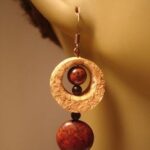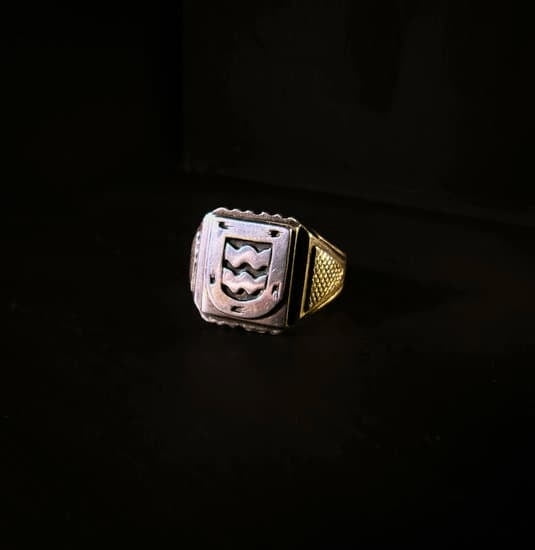Are you passionate about creating exquisite fine jewelry? If so, learning how to solder fine jewelry is an essential skill that will elevate the quality and craftsmanship of your pieces.
Soldering is the process of joining metal components together using a filler metal, and it plays a crucial role in the creation of fine jewelry. Whether you are a seasoned jeweler or just starting out, mastering the art of soldering will open up endless possibilities for designing and crafting beautiful jewelry pieces.
Soldering fine jewelry requires precision, attention to detail, and an understanding of the materials and techniques involved. In this comprehensive guide, we will delve into the importance of soldering in the realm of fine jewelry making. From exploring different metals used in fine jewelry to providing step-by-step instructions on the soldering process, this article will equip you with all the knowledge and tips you need to master this intricate craft.
As we embark on this journey into the world of soldering fine jewelry, it’s important to understand that this skill goes beyond simply joining metal components together. Soldering not only allows for complex designs and intricate details but also contributes to the overall durability and longevity of your jewelry pieces.
With the right tools, materials, and techniques, you can confidently create stunning, heirloom-quality jewelry that stands the test of time. So let’s dive in and explore the art of soldering fine jewelry.
Understanding the Materials
When it comes to soldering fine jewelry, it’s essential to have a good understanding of the materials involved. Fine jewelry is often made from a variety of metals, each with its own unique properties and characteristics. It’s important to know how these metals behave during the soldering process in order to achieve the best results.
Common Metals Used in Fine Jewelry
One of the most common metals used in fine jewelry is gold. Gold is highly malleable and can be easily shaped and formed into intricate designs, making it a popular choice for jewelry making. Silver is another popular metal for fine jewelry, known for its lustrous shine and affordability. Other metals used include platinum, palladium, and various alloys.
Understanding Metal Properties
Each metal used in fine jewelry has its own melting point and reacts differently to heat. For example, gold melts at a much higher temperature than silver, so it’s important to take this into consideration when soldering pieces that contain multiple types of metal. Understanding how different metals behave under heat is crucial for successful soldering.
Tips for Soldering Different Metals
When soldering fine jewelry made from different metals, it’s important to use the appropriate solder for each type of metal. This ensures a strong bond without damaging the integrity of the piece. Additionally, some metals may require specialized fluxes or heating techniques to achieve optimal results. By understanding the properties of each metal and following best practices for soldering, you can ensure that your fine jewelry pieces are beautifully crafted and long-lasting.
Essential Tools and Equipment
When it comes to soldering fine jewelry, having the right tools and equipment is essential for a successful and efficient process. From the type of solder to the specific torch needed, it’s important to have the right materials at your disposal. Here’s a comprehensive guide to the tools needed for soldering fine jewelry.
One of the most crucial tools for soldering fine jewelry is a jeweler’s torch. There are different types of torches available, such as acetylene/air, propane/oxygen, or butane torches. The type of torch you choose will depend on the specific requirements of the jewelry piece you are working on. Additionally, other essential tools include heat-resistant tweezers, soldering picks, flux brushes, and a fireproof surface such as a soldering block or pad.
In addition to the torch and various hand tools, having a well-ventilated workspace is also crucial. Proper ventilation helps to minimize exposure to potentially harmful fumes and ensures a safe working environment. Other safety equipment such as eye protection and heat-resistant gloves should also be worn during the soldering process to prevent any accidents or injuries. Understanding how to use these tools correctly is vital in achieving successful results when soldering fine jewelry.
Preparing the Workspace
When it comes to soldering fine jewelry, it’s important to have a designated workspace that is safe and efficient. This not only ensures the quality of your work but also minimizes the risk of accidents. To set up a proper soldering area, there are a few key tips to keep in mind.
First and foremost, choose a well-ventilated area for soldering fine jewelry. Soldering involves the use of flux and can produce fumes that may be harmful if inhaled. It’s essential to work in a space with good airflow to prevent the accumulation of these fumes. If possible, set up near a window or invest in a ventilation system to ensure the safety of your workspace.
In addition to ventilation, it’s crucial to have a fire-resistant surface for soldering. Protect your workbench or table with a fireproof pad or sheet to prevent accidental fires caused by hot equipment or stray embers. This extra layer of protection will give you peace of mind while working on delicate pieces of fine jewelry.
Finally, be sure to have a fire extinguisher within reach in case of emergencies. This is an essential safety measure that should not be overlooked when setting up your soldering area.
By following these tips and taking the necessary precautions, you can create a safe and efficient workspace for soldering fine jewelry. Prioritizing ventilation, fire resistance, and emergency preparedness will contribute to successful soldering practices and ultimately result in high-quality finished pieces.
Step-by-Step Soldering Process
Soldering fine jewelry requires precision and attention to detail. It is a delicate process that, when done correctly, can produce beautiful and long-lasting pieces of jewelry. In this section, we will provide a detailed walkthrough of how to solder fine jewelry, from preparing the materials to the final steps of the process.
The first step in soldering fine jewelry is to prepare the work area and gather all the necessary tools and materials. This includes the metal pieces to be soldered, soldering flux, solder wire, a torch or soldering iron, tweezers, and safety equipment such as heat-resistant gloves and goggles. It is essential to work in a well-ventilated area and have a fire extinguisher on hand for added safety.
Once the workspace is set up, it is important to clean the metal pieces thoroughly to remove any dirt, grease, or oxidation that could interfere with the soldering process. After cleaning, apply a small amount of flux to both pieces of metal where they will be joined. The flux helps prevent oxidation during heating and promotes better adhesion of the solder.
Then, position the pieces together using tweezers or clamps in preparation for soldering. In the next paragraph we will explain how to properly use the torch or soldering iron to complete the process and achieve smooth results.
Soldering fine jewelry requires precise control over heat application. Depending on the type of metal being used, different temperatures may be required for successful soldering. Carefully heat the metal pieces with a torch or soldering iron until they reach the melting point of the solder wire. Once this temperature is reached, touch the tip of the solder wire to the joint between the two metal pieces.
The melted solder should flow evenly around the joint by capillary action until it creates a secure bond between them. It’s important to avoid overheating as it can damage delicate gemstones or cause warping in thin metals like gold sheet or wire. Practice and patience are key when mastering this essential skill for creating stunning fine jewelry designs.
Troubleshooting Tips
When soldering fine jewelry, it’s not uncommon to encounter some common issues that can arise during the process. From difficulty with the soldering joint to challenges with the torch flame, troubleshooting these problems is essential for achieving a successful result. Below are some common issues and solutions to consider when soldering fine jewelry:
- Weak or Incomplete Soldering Joint: One of the most frustrating issues when soldering fine jewelry is when the joint doesn’t fully bond or appears weak after soldering. This can be caused by insufficient heat, improper flux application, or using the wrong type of solder.
To address this issue, make sure to properly clean and flux the pieces being joined, use the appropriate type of solder for the metal being worked with, and ensure that there is enough heat to create a strong bond. - Torch Flame Control: Controlling the torch flame is crucial for successful soldering, and inconsistent or uncontrollable flames can lead to uneven heating or damage to delicate jewelry components. If you’re having trouble with your torch flame, try adjusting the gas flow and oxygen levels to achieve a steady, even flame. Additionally, consider using a smaller tip if your torch allows for interchangeable tips to better focus the heat on specific areas.
- Overheating and Warping: Overheating fine jewelry during soldering can cause metal warping or damage gemstones in the piece. To prevent this issue, use a gentle yet concentrated flame and work in quick, focused motions. You may also want to protect any fragile gemstones by using heat-resistant materials like silica gel or thermacoat to shield them from direct heat exposure.
These troubleshooting tips are just a few examples of how to address common issues when soldering fine jewelry. By understanding how to identify and resolve these problems, you’ll be better equipped to achieve high-quality results in your jewelry-making endeavors. Remember that practice makes perfect, so don’t be discouraged by initial challenges – with patience and persistence, you can master the art of soldering fine jewelry.
Finishing Touches
After successfully soldering fine jewelry, the next crucial step is to clean and polish the piece to give it a beautiful, refined finish. Proper cleaning and polishing not only enhance the appearance of the jewelry but also ensure its longevity. Below are some essential tips on how to effectively clean and polish soldered fine jewelry:
- Use a mild cleaning solution: Prepare a gentle cleaning solution by mixing warm water with a small amount of mild dish soap. Soak the soldered jewelry in this solution for a few minutes to remove any dirt or grime.
- Soft brushing: Use a soft-bristled brush, such as an old toothbrush, to gently scrub the jewelry and reach into intricate areas where dirt may be trapped. Be cautious not to use abrasive brushes that could scratch the metal surface.
- Rinse and dry thoroughly: After brushing, rinse the jewelry under running water to ensure all soap residue is removed. Pat it dry with a soft, lint-free cloth to prevent water spots from forming on the metal.
Once cleaned, it is time to polish the soldered fine jewelry to restore its luster and shine. Here are some effective methods for achieving a polished finish:
- Polishing cloth: Utilize a specially designed jewelry polishing cloth made with micro-abrasive materials. Gently rub the cloth against the surface of the jewelry in circular motions to buff away any dullness and bring out its natural shine.
- Paste or cream polish: Apply a small amount of metal polishing paste or cream onto a polishing cloth and carefully rub it onto the soldered area. This will help remove any remaining tarnish or light scratches, leaving behind a glossy finish.
By following these cleaning and polishing techniques, you can ensure that your soldered fine jewelry maintains its exquisite appearance and stands out as a stunning piece of craftsmanship.
Safety precaution: Always wear appropriate safety gear such as gloves and goggles when handling cleaning solutions or polishing agents to protect your hands and eyes from irritation or harmful chemicals. Additionally, work in a well-ventilated area to avoid inhaling any fumes produced during the cleaning and polishing process.
Safety Precautions
Protective Gear
When soldering fine jewelry, it is crucial to prioritize safety. This includes wearing the appropriate protective gear such as heat-resistant gloves, safety goggles, and an apron to shield your skin and eyes from sparks, flames, and hot metal. These protective measures are especially important when working with small, delicate pieces of jewelry as they can be easily damaged if proper precautions are not taken.
Ventilation
Proper ventilation is essential when soldering fine jewelry. The soldering process involves the use of flux and other chemicals that can produce fumes, so it’s important to work in a well-ventilated area or use a fume extractor to remove harmful vapors from the workspace. Inhaling these fumes can be detrimental to your health, so always ensure that you have adequate ventilation when soldering.
Fire Safety
Soldering fine jewelry involves working with an open flame, which poses a fire hazard if not handled carefully. It’s vital to have a fire extinguisher within reach at all times when soldering. Additionally, keep a heat-proof surface nearby to place hot tools and prevent accidental fires. Always be mindful of flammable materials in your workspace and take the necessary precautions to prevent fires while soldering fine jewelry.
Conclusion
In conclusion, mastering the art of soldering fine jewelry requires a combination of knowledge, skill, and dedication. Understanding the materials and essential tools is crucial for a successful soldering process. Equally important is creating a safe and efficient workspace to work in. The step-by-step guide provided in this article offers a thorough walkthrough on how to solder fine jewelry, which can serve as a valuable resource for both beginners and experienced jewelers.
Additionally, it’s essential to be familiar with troubleshooting tips to address any issues that may arise during the soldering process. This includes knowing how to clean and polish the soldered jewelry to ensure a professional finish. Remember that safety precautions are paramount when working with delicate materials and high temperatures. By following these tips and guidelines, jewelers can achieve successful results while ensuring their own well-being.
Ultimately, mastering the art of soldering fine jewelry is an ongoing journey of learning and refining skills. Whether you’re just starting out or looking to improve your technique, these tips for success and inspiration can provide valuable guidance throughout your jewelry-making journey. With dedication and practice, anyone can become proficient in how to solder fine jewelry and create stunning pieces that will stand the test of time.
Frequently Asked Questions
How Do You Solder Delicate Jewelry?
Soldering delicate jewelry requires patience, precision, and a steady hand. It’s important to use small, precise movements to avoid damaging the piece.
Using a soldering iron with a fine tip can help control the amount of heat applied to the joint, preventing any excess solder from spreading where it’s not wanted. Additionally, using tweezers or third hands to hold the pieces together while soldering can help ensure accurate positioning.
What Kind of Solder Do You Use for Jewelry?
When it comes to soldering jewelry, it’s essential to use solder that is specifically designed for use with precious metals like gold and silver. For example, silver solder is commonly used for sterling silver jewelry because it has a lower melting temperature than the metal itself, allowing for a clean join without damaging the piece.
It’s important to match the type of solder with the metal being worked on and to use the smallest amount possible to minimize any visible seams.
Can You Solder Jewelry at Home?
Yes, it is possible to solder jewelry at home with the right tools and materials. However, it’s crucial to have proper ventilation and safety precautions in place when working with hot metals and fluxes.
Additionally, practicing on scrap pieces before attempting to solder valuable or delicate jewelry can help build confidence and skill. With some practice and attention to detail, many people find that they are able to successfully solder their own jewelry at home.

Welcome to my jewelry blog! My name is Sarah and I am the owner of this blog.
I love making jewelry and sharing my creations with others.
So whether you’re someone who loves wearing jewelry yourself or simply enjoys learning about it, be sure to check out my blog for insightful posts on everything related to this exciting topic!





